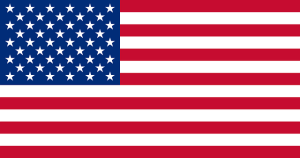Charting the US Army Reserve Flag’s Evolution and Significance
The US Army Reserve Flag has undergone a significant transformation over the past century, evolving …….

The US Army Reserve Flag has undergone a significant transformation over the past century, evolving from a basic banner during World War I into a complex symbol that reflects the dynamic mission and values of the U.S. Army Reserve. The current flag design features an eagle with an olive branch and arrows, a shield representing all seven branches of the U.S. Armed Forces, the motto "I Will Uphold Them," and a background that collectively symbolizes the reserve's dedication to national defense. Its detailed emblems honor the founding American colonies, the Army Reserve's critical role in military operations like Operation Desert Shield and Storm, and its contributions to global security, including peacekeeping efforts in Bosnia. As a cultural icon, it stands for service, readiness, and sacrifice, resonating with American values and being integrated into societal narratives through media and public monuments. The flag's presence in parades and ceremonies reinforces its role as an emblem of the country's defense readiness and a mark of respect for America's military reserves. It uniquely bridges civilian life with military duty, highlighting the reserve's significant place within the United States' defense strategy.
The U.S. Army Reserve Flag stands as a testament to the dedication, heritage, and commitment of America’s military reserve forces. This article delves into the rich tapestry of its evolution, the significance behind each element embedded within its design, and the pivotal moments it has witnessed on the battlefield. From its inception to its current form, the flag reflects the changing dynamics of the Army Reserve, mirroring its cultural impact and representation within American society. Join us as we explore “The Evolution of the U.S. Army Reserve Flag: A Visual Chronicle,” uncovering the stories encapsulated by its emblems and the historic milestones it represents.
- The Evolution of the U.S. Army Reserve Flag: A Visual Chronicle
- Design and Symbolism: Deciphering the Emblems on the Army Reserve Flag
- Historic Moments: The US Army Reserve Flag in Military Operations
- Cultural Impact and Representation: The Army Reserve Flag in American Society
The Evolution of the U.S. Army Reserve Flag: A Visual Chronicle

The U.S. Army Reserve Flag has undergone a series of design changes over its history, reflecting both the evolution of military symbolism and the shifts in the visual identity of the United States Army Reserve. Originating as a simple banner to signify the presence and commitment of the Army Reserve during World War I, the flag has grown into a complex emblem rich with meanings. Early iterations featured a minimalist design, incorporating the shield from the Great Seal of the United States, encircled by the motto “I Will Uphold Them.” Over the decades, the design evolved to include additional elements that represent the Army Reserve’s role and values. Today, the flag boasts a detailed composition, symbolizing the readiness, honor, and strength of America’s military reserve component. Each element in the current design of the US Army Reserve Flag—the American bald eagle clutching an olive branch in one talon and a bundle of thirteen arrows in the other, the shield, the motto, and the flag’s background—serves as a visual testament to the reserve’s dedication to defend the nation.
The chronicle of the U.S. Army Reserve Flag is not merely a narrative of changing aesthetics; it is a reflection of the organization’s growth and its integration into the fabric of American defense strategy. The flag has been a constant presence during training exercises, community service events, and times of national emergency, serving as a rallying point for the reservists who answer the call to serve their country both at home and abroad. As such, the flag stands as a symbol of the collective resolve and commitment of the U.S. Army Reserve, encapsulating its history, purpose, and indomitable spirit in a single visual chronicle.
Design and Symbolism: Deciphering the Emblems on the Army Reserve Flag

The US Army Reserve Flag serves as a visual representation of the commitment and heritage of the Army Reserve, encapsulating its values and history through symbolic design. At its center, the flag features an eagle clutching an olive branch in one talon and a laurel wreath in the other, reflecting the dual nature of peace and victory. The thirteen stars arrayed above the eagle pay homage to the original thirteen colonies that declared independence, a nod to the foundational roots of the United States and its military forces. These stars also signify the Army Reserve’s role as an integral component of the nation’s defense strategy. Beneath the eagle, a shield displays a wide array of weapons and symbols from all seven branches of the U.S. Armed Forces, including the Army, Navy, Air Force, Marine Corps, Coast Guard, and Space Force. This inclusivity underscores the flag’s representation of collective service and unity among the military branches. The field of the flag is divided into three vertical sections, with red on each side and a blue center, mirroring the design of the U.S. National Flag. This pattern reinforces the Army Reserve’s allegiance to the country and its constitution. Each element of the US Army Reserve Flag is deliberately chosen to convey a deep-seated connection to American values, military history, and the enduring legacy of the Army Reserve within the broader context of national defense.
Historic Moments: The US Army Reserve Flag in Military Operations

The US Army Reserve Flag holds a unique place in the annals of military history, particularly during significant operations where its presence has marked historic moments. One such instance was during Operation Desert Shield and Storm, where the flag’s emblematic symbol of readiness and commitment played a crucial role in the mobilization and deployment of reserve components to the Middle East. The flag’s deployment signified the readiness of the US Army Reserve to answer the call alongside active duty forces, operating under the unified command to protect national interests and uphold international commitments.
In the years following, the US Army Reserve Flag continued to be a symbol of honor and service during various joint operations. Its visibility in military publications and historical records underscores the reserve’s pivotal contributions, such as during the Bosnian conflict where the flag was prominently displayed as part of peacekeeping efforts. These instances highlight the flag’s significance not only as a standard but also as a representation of the collective resolve and capability of the US Army Reserve to respond effectively to global challenges and support ongoing military operations. The flag’s presence in these historic moments serves as a testament to the reserve’s integral role within the broader defense strategy of the United States.
Cultural Impact and Representation: The Army Reserve Flag in American Society

The US Army Reserve Flag holds a significant place in American society, serving as a symbol of the collective commitment and diversity within the nation’s military reserves. Over the years, this emblem has been woven into the cultural fabric through various media representations, highlighting the values of service, readiness, and dedication that resonate with the broader American ethos. Cultural artifacts such as films, literature, and public monuments often depict the flag, reflecting its role in safeguarding the nation’s freedoms and way of life. The inclusion of the US Army Reserve Flag in these domains underscores its representation as a national asset, one that is both integral to the armed forces’ operational strategy and emblematic of the collective spirit of American reserves. Its presence in parades, ceremonies, and public displays further cements its status as a visible sign of the country’s preparedness and respect for those who serve in a non-active capacity. The flag, with its distinct design, serves as a tangible link between civilian life and military duty, symbolizing the reserve component’s critical role in the United States’ defense apparatus.
In examining the rich tapestry of the U.S. Army Reserve Flag’s history, design, and cultural significance, it becomes evident that this emblematic symbol encapsulates a multifaceted narrative of American defense and identity. From its evolution over time to its prominent role in pivotal military operations, the flag stands as a testament to the resilience and dedication of the U.S. Army Reserve. Its cultural impact and representation within American society further underscore its importance beyond mere military utility. As an enduring symbol, the US Army Reserve Flag continues to reflect the values and aspirations of those who serve in its name, ensuring their contributions are visible and honored.







